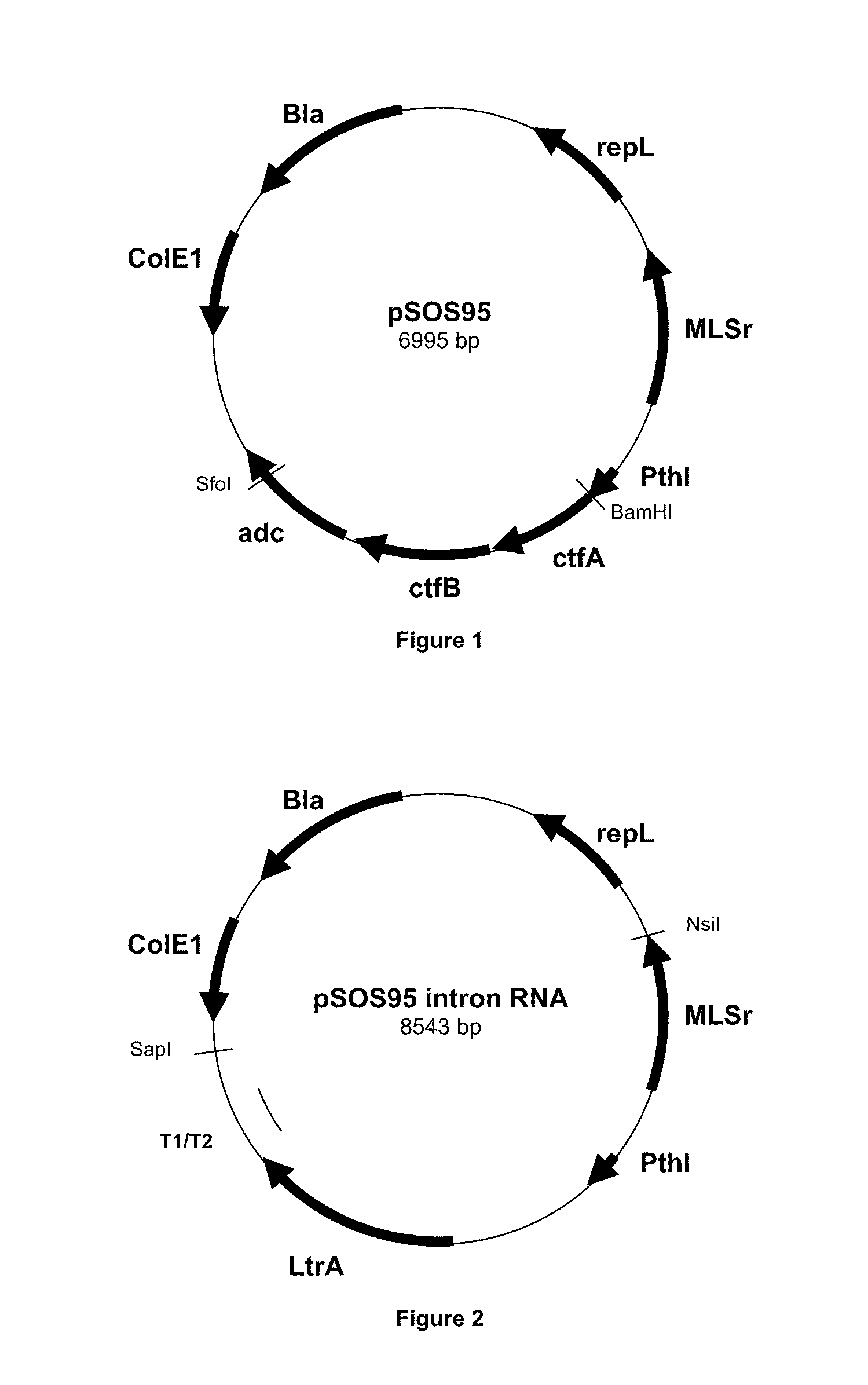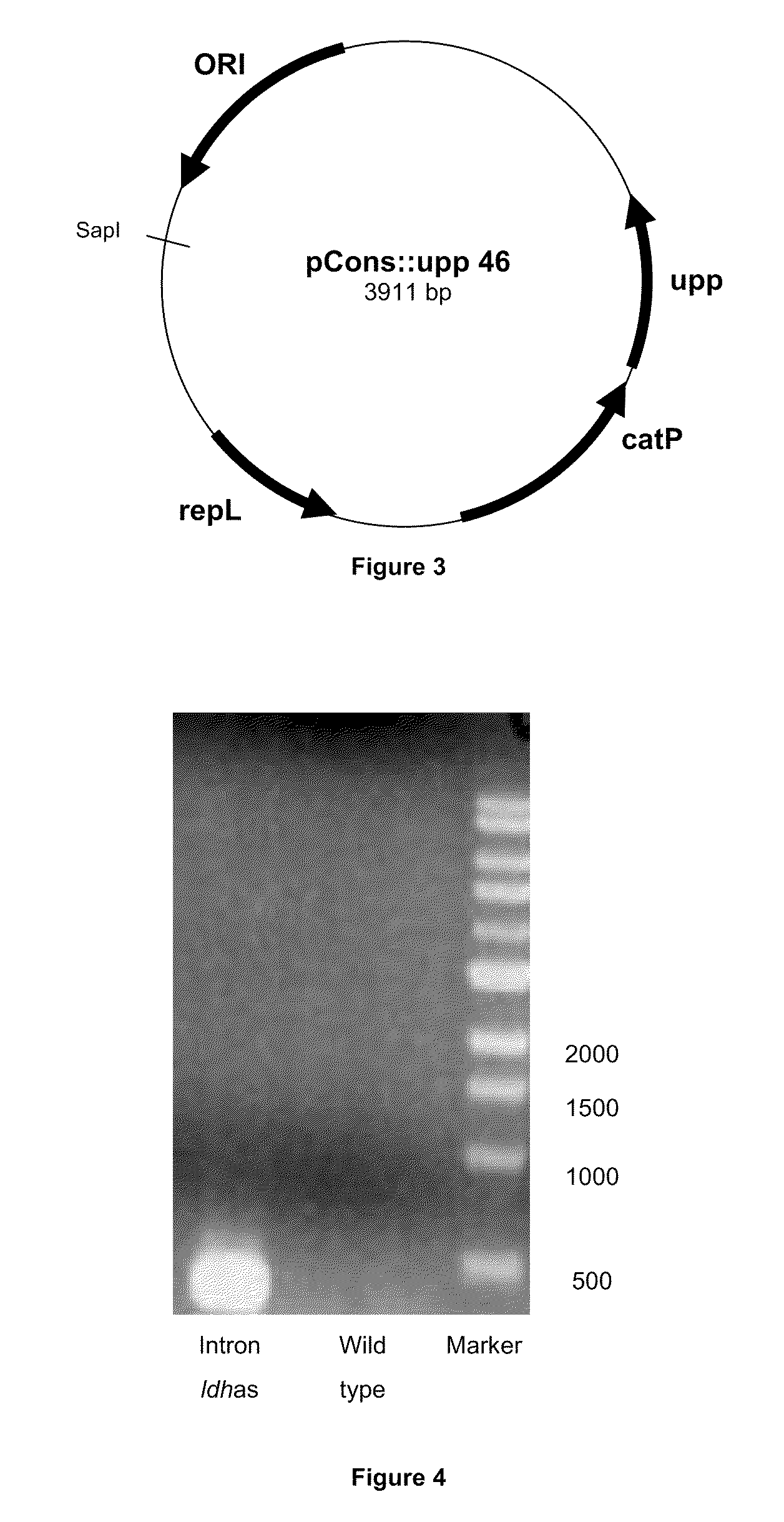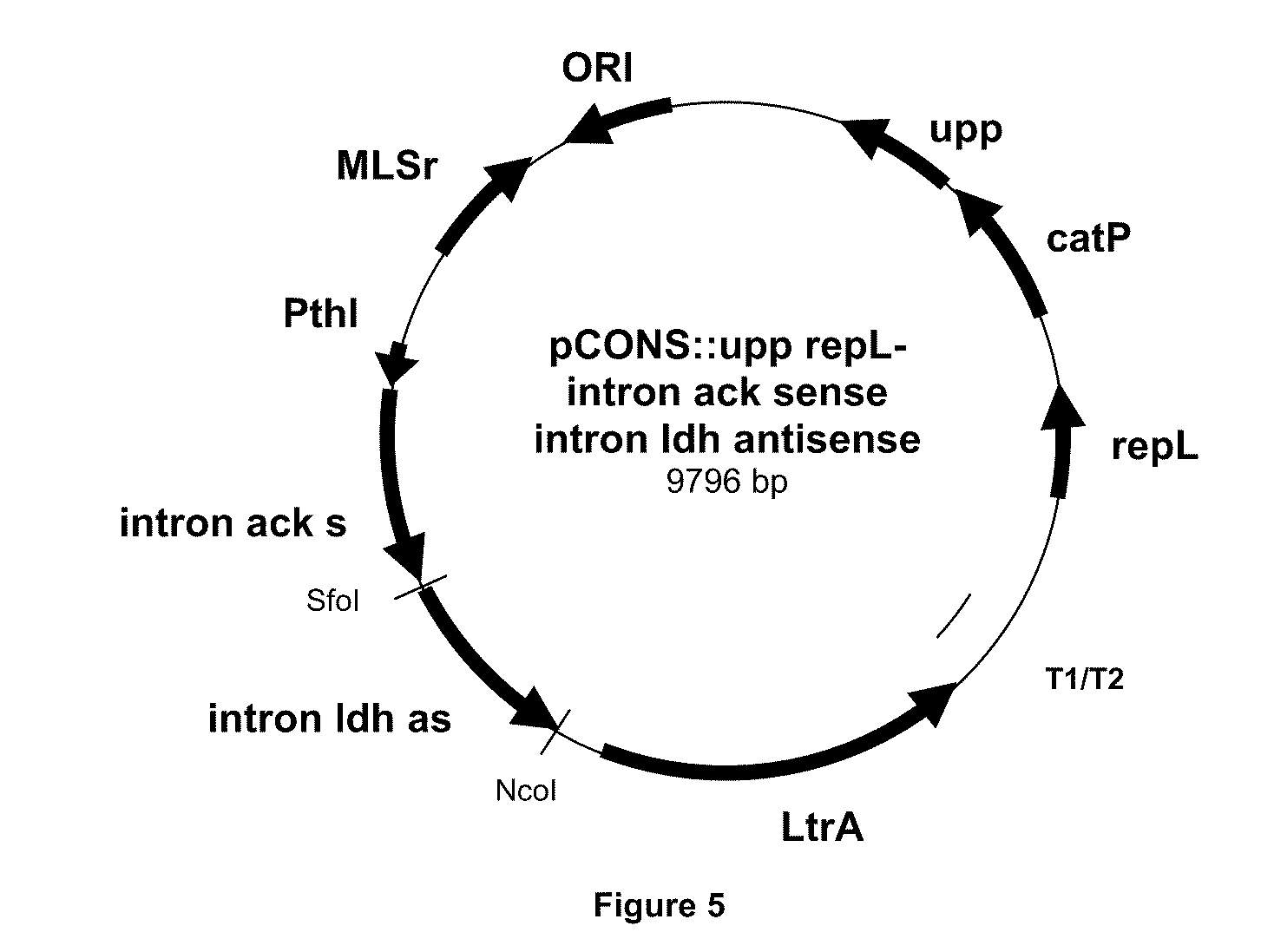Process for the stable gene interruption in clostridia
a technology of stable gene interruption and clostridia, which is applied in the field of stable gene interruption in clostridia, can solve the problems of allowing the introduction of multiple mutations, inefficient available methods for their transformation, and not naturally transformable clostridia
- Summary
- Abstract
- Description
- Claims
- Application Information
AI Technical Summary
Benefits of technology
Problems solved by technology
Method used
Image
Examples
example 1
Contruction of the pCONS::Upp-Intron Vector
[0091]This plasmid contains a pIM13 origin of replication fuctional in Clostridia, a catP gene conferring resistance to thiamphénicol, the upp gene and LtrA ORF required for functional expression of the group II intron RNP. In order to construct the pCONS-intron vector, we sub-cloned the sequence of the LtrA ORF into the pCONS::upp vector. The LtrA ORF region was obtained from restriction digestion of pACD4 vector (Sigma TargeTron) with XbaI and PshAl. The pSOS95 vector was digested with BamHI and Sfol blunt ended to remove the acetone formation genes while leaving the thiolase promoter region. The LtrA ORF digest product and the linearized pSOS95 vector were ligated to create the pSOS-intron vector.
[0092]The pSOS-intron vector was digested by Nsil and Sapl to remove the thiolase promoter and LtrA ORF. The pCONS::upp was digested with Sapl and blunt ended. These fragments were ligated together to generate the pCONS::upp-intron vector.
example 2
Contruction of the pCONS::Upp-Intron Ldh Sense and pCONS::Upp-Intron Ldh Antisense Vectors
[0093]To inactivate the ldh gene, a strain with the insertion of sense or antisense intron II in the ldh gene was constructed as follows. First, a computer algorithm was used to identify target sites in the ldh gene. Second, the computer algorithm outputs primer sequences (Table 2) which are used to mutate (re-target) the ldh sense intron by PCR with the primers LDH 1, LDH 2, LDH 3 and the EBS universal primer or the ldh antisense intron by PCR with the primers LDH 4, LDH 5, LDH 6 and the EBS universal primer. Next, the mutated 350 pb PCR fragment ldh sense or antisense intron and the pCONS::upp-intron vector were digested by BsrGI and HindIII and then ligated to yield the pCONS::upp-intron ldh sense or the pCONS::upp-intron ldh antisense.
TABLE 3primers sequencesNamePrimer sequencesLDH 1SEQ ID No 1aaaaaagcttataattatccttacttgcct(IBS)ctgaggtacgcccagatagggtgLDH 2SEQ ID No 2cagattgtacaaatgtggtgataa...
example 3
Double Intron Integration
[0096]The pCONS::upp-intron ack sense-intron ldh antisense vector was constructed using specific primers described in table 3 and 4.
TABLE 4primers sequencesNamePrimer sequencesACK 1SEQ ID No 9aaaaaagcttataattatccttagtactcg(IBS)ctaaagtgcgcccagatagggtgACK 2SEQ ID No 10cagattgtacaaatgtggtgataacagata(EBS1d)agtcgctaaaggtaacttacctttctttgtACK 3)SEQ ID No 11tgaacgcaagtttctaatttcgattagtac(EBS2gtcatagaggaaagtgtctACK 4SEQ ID No 12aaaaaagcttataattatccttatctaaca(IBS)caagcgtgcgcccagatagggtgACK 5SEQ ID No 13cagattgtacaaatgtggtgataacagata(EBS1d)agtcacaagctttaacttacctttctttgtACK 6SEQ ID No 14tgaacgcaagtttctaatttcggttttaga(EBS2)tcgatagaggaaagtgtct
[0097]The pCONS::upp-intron ack sense-intron ldh antisense plasmid was then used to transform by electroporation a C. acetobutylicum strain. After selection on Petri plate for clones resistant to thiamphenicol (50 μg / ml), one colony was cultured for 24 hours in liquid synthetic medium with thiamphenicol at 50 μg / ml and 100 μl of undi...
PUM
| Property | Measurement | Unit |
|---|---|---|
| Time | aaaaa | aaaaa |
| Electrical resistance | aaaaa | aaaaa |
| Strain point | aaaaa | aaaaa |
Abstract
Description
Claims
Application Information
 Login to View More
Login to View More - R&D
- Intellectual Property
- Life Sciences
- Materials
- Tech Scout
- Unparalleled Data Quality
- Higher Quality Content
- 60% Fewer Hallucinations
Browse by: Latest US Patents, China's latest patents, Technical Efficacy Thesaurus, Application Domain, Technology Topic, Popular Technical Reports.
© 2025 PatSnap. All rights reserved.Legal|Privacy policy|Modern Slavery Act Transparency Statement|Sitemap|About US| Contact US: help@patsnap.com



